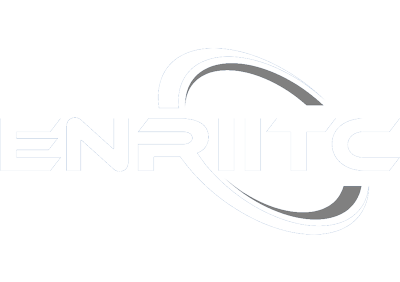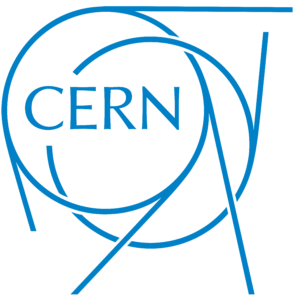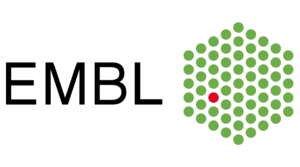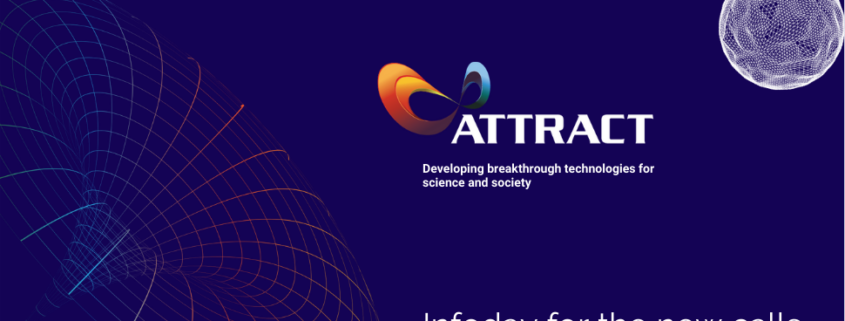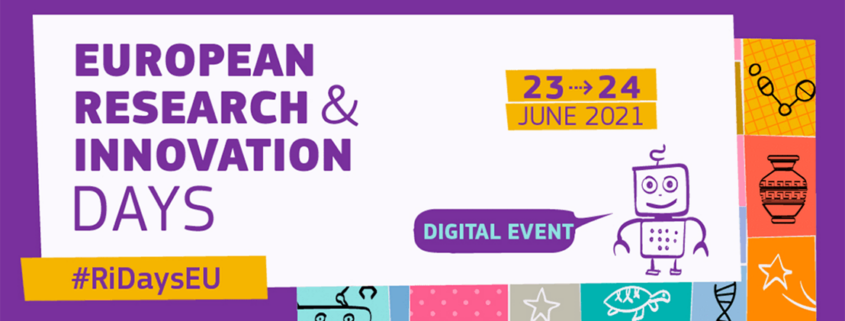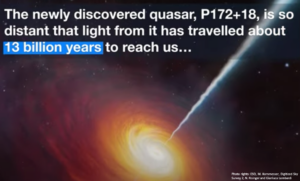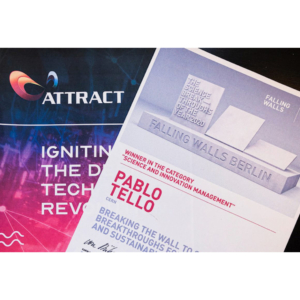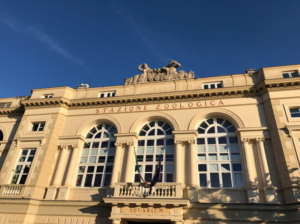Innovation-related past events
In this section you can find information about past news or events organised by ENRIITC members which focus on innovation and how industry can take up and commercialise research outputs.
ATTRACT unveils the projects that will benefit from its €28 million fund for innovation
22 July 2022
ATTRACT, a research and innovation project funded by the European Union and backed by a consortium of nine partners, including CERN, will commit €28 million to finance 36 projects from more than 20 countries.
It takes years for a spinoff idea to leave the lab, mature and eventually hit the market, if ever. ATTRACT aims to develop a funding model to help diminish the time needed and increase the chances of great ideas leaving labs and directly benefiting society.
In its first phase, which focused on turning ideas into functional prototypes, ATTRACT supported 170 breakthrough ideas with €100 000 each in seed funding in order to create a proof-of-concept pool of ideas in detection and imaging. The pool includes drones capable of detecting pollution in the air, through to AR/VR aid for surgeons and new cryptographic methods.
During a kick-off meeting on 31 May 2022, ATTRACT presented the 18 R&D&I projects that it had selected from the 68 proposals in the proof-of-concept pool. The 18 projects have received between €500 000 and €2 000 000 each, depending on their start-end technology readiness level (TRL), to help them to move from a prototype to a pre-market product (risk mitigation phase).
Learn more here!
PICTURE A SCIENTIST – Film & discussion
16 February 2022
PICTURE A SCIENTIST is a documentary film chronicling the groundswell of researchers who are writing a new chapter for women scientists. A biologist, a chemist and a geologist lead viewers on a journey deep into their own experiences in the sciences, overcoming brutal harassment, institutional discrimination, and years of subtle slights to revolutionize the culture of science.
From cramped laboratories to spectacular field stations, we also encounter scientific luminaries who provide new perspectives on how to make science itself more diverse, equitable, and open to all.
Learn more here!
ESO telescope uncovers closest pair of supermassive black holes yet
30 November 2021
Using the European Southern Observatory’s Very Large Telescope (ESO’s VLT), astronomers have revealed the closest pair of supermassive black holes to Earth ever observed. The two objects also have a much smaller separation than any other previously spotted pair of supermassive black holes and will eventually merge into one giant black hole.
Located in the galaxy NGC 7727 in the constellation Aquarius, the supermassive black hole pair is about 89 million light-years away from Earth. Although this may seem distant, it beats the previous record of 470 million light-years by quite some margin, making the newfound supermassive black hole pair the closest to us yet.
Supermassive black holes lurk at the centre of massive galaxies and when two such galaxies merge, the black holes end up on a collision course. The pair in NGC 7727 beat the record for the smallest separation between two supermassive black holes, as they are observed to be just 1600 light-years apart in the sky. “It is the first time we find two supermassive black holes that are this close to each other, less than half the separation of the previous record holder,” says Karina Voggel, an astronomer at the Strasbourg Observatory in France and lead author of the study published online today in Astronomy & Astrophysics.
New Approaches and Concepts in Microbiology
7-9 July 2021
This symposium covered a broad range of topics in microbiology, including antibiotic-related research, bacterial communities and microbiome, cell biology, regulation & signalling, pathogenesis and evolution. Emphasis will be placed on novel approaches and technologies (from systems-based to single-cell) that drive each field or have the potential to revolutionise future research in microbiology.
This symposium aimed at bridging the gap between traditional microbiology and novel technologies, by exposing microbiologists to new ways of addressing their hypotheses. At the same time, it provides a platform for systems or technology experts to get a better understanding of the important questions in the field.
Infoday for ATTRACT phase 2
29 June 2021
The ATTRACT phase 2 took off! During the Infoday, members of the project presented the requirements for the calls to boost innovation in Europe and scale up the most promising technology outcomes from funded projects of the ATTRACT phase 1.
The ATTRACT initiative addresses, among others, the ICT sector, which is a cornerstone of Europe’s economy. This sector is also one of the most dynamic, standing out for its high R&D intensity and productivity.
ATTRACT uses European Commission public funding to absorb and mitigate the initial risk of radical technologies for private investors. The ATTRACT Consortium supports investors on a journey towards commercialisation and facilitates private capital entry points.
EUROPEAN RESEARCH & INNOVATION DAYS
23-24 June 2021
Interesting speakers talked about the future of European research and innovation, and Horizon Europe, the new European research and innovation funding programme.
Choosing from all the live sessions available, the participants have been able to create their own programme, ranging from high-level plenaries to immersive panel discussions on topics such as the post-COVID-19 recovery, the European Research Area, digitalisation, our green future and more.
EOSC Symposium 2021 “Implementing an inclusive European Open Science Cloud”
15 – 18 June 2021
The European Open Science Cloud has finally entered its highly-anticipated implementation phase. The EOSC Symposium provided a key engagement opportunity for the EOSC community.
The foundation of the EOSC Association in 2020 is a key element of the implementation phase (2021-2027). Building on the EOSC SRIA, the Association will establish a number of Advisory Groups and Task Forces by June. These focused on priority areas as we enter into the implementation phase.
At the same time, a plethora of EU, regionally and nationally funded research projects are carrying out activities, and actually producing key exploitable results which can contribute to this new phase.
The Symposium also offered an inclusive platform for all stakeholders to share objectives, visions, activities and results in order to shape the future of the EOSC. The Symposium was organised by the EOSCsecretariat.eu project as part of its support to the EOSC Governance.
European strategic partnership meeting: Swedish cooperation with France and Germany
26 May 2021
The first European strategic partnership meeting focusing on collaboration opportunities between Sweden and France and Sweden and Germany, respectively.
Sweden has entered into two bilateral strategic Innovation partnerships with two countries in Europe – one with France and one with Germany both focusing on research and innovation.
Being Sweden’s innovation agency, Vinnova has a role to play here which is why Vinnova has decided to launch this partnership meeting.
ESOcast 234 Light: Most distant quasar with powerful radio jets discovered
8 March 2021
With the help of ESO’s Very Large Telescope, astronomers have discovered and studied in detail the most distant source of radio emission known to date. The source is a “radio-loud” quasar — a bright object with powerful jets emitting at radio wavelengths — that is so far away its light has taken 13 billion years to reach us. Watch the video which summarises the discovery here.
ATTRACT featured at Falling Walls
27 January 2021
The Falling Walls conference featured CERN during its online 2020 event, hosting a debate entitled “Does CERN need another supercollider?” and giving a prize to the European-funded ATTRACT project.
Falling Walls, an organisation based in Berlin, is known for its highly produced and well-attended annual conference, which covers “the next walls to fall in science and society”.
Falling Walls bestowed a prize on the ATTRACT project. “The ATTRACT project proposes a change in mindset on how new technologies can be funded. It aims to streamline the pathway of innovation from fundamental research to society”, said Pablo Garcia Tello, coordinator for European-funded projects at CERN.
During Phase l, ATTRACT was granted €17 million to fund 170 breakthrough projects for 12 months, enabling them to implement and develop their research idea before presenting their work at the Final ATTRACT Conference in September 2020. ATTRACT has just received its second-round grant from the European Commission, as a continuation of ATTRACT Phase l. The grant consolidates the recognition of European research infrastructures as innovation drivers. The online kick-off meeting for this second phase will take place on 1 February from 9 a.m. CET and is open to the public.
Euro-BioImaging: Working with science and industry to expand our imaging technology offer!
01 September 2020
For the past decades, the fields of biological and biomedical imaging have been characterised by unprecedented levels of technological innovation. Technical breakthroughs have driven numerous discoveries and continue to provide exciting opportunities for advances in the life sciences. As a technology-driven research infrastructure, Euro-BioImaging ERIC strives to stay at the technological forefront by guaranteeing access to cutting-edge biological and biomedical imaging technologies.
Together with our Nodes, users as well as partners from industry, we have developed a process to identify and assess new imaging technologies, to make sure our technology offer is constantly evolving to meet user needs. In July 2020, Euro-BioImaging launched its first Proof-of-Concept study to introduce – and assess under open access conditions – previously in Euro-BioImaging unavailable, novel imaging technologies. This process is an example of an effective cooperation between industry and research infrastructures for the benefit of science and technology, as Antje Keppler, Interim Section Director of the Euro-BioImaging Bio-Hub at the European Molecular Biology Laboratory (EMBL), explains. Click here to read more!
kT Metrics Report
02 June 2020
Knowledge Transfer Metrics – Towards an EU-wide set of harmonised indicators
An Expert Group was assembled by the European Commission Joint Research Centre (JRC) to examine how best to advance towards an EU-wide set of harmonised metrics for knowledge transfer (KT) in publicly funded research organisations (PROs), including universities. The Expert Group was established in partnership with the ENRIITC Associate, the European Association of KT professionals (ASTP), with the purpose of making use of ASTP’s experience of managing a pan-European data survey.
The tasks identified were to:
- Explore with those active in knowledge transfer across EU Member States the appetite for harmonised metrics and the factors that would influence their adoption;
- Review the 2009 seven core and seven supplementary performance indicators for PROs and test their validity in 2019;
- Recommend a set of harmonised core indicators and a methodology for their adoption.
To read more, click here.
Workshop Genomics for a Blue Economy
11-12 December 2019
There is huge biodiversity hosted in the oceans that stimulate the research for bioactive molecules from marine bioresources for applications in the field of biotechnology. A new cohort of cross-disciplinary trained scientists are needed to exploit these promising biological resources and new strategies are needed to avoid impoverishing marine resources.
The workshop Genomic for a Blue Economy aim was to identify the state-of-the-art methods, potential challenges, and future directions in the characterisation of marine natural compounds and their applications as biotechnological and pharmaceutical products.
For more information about this event, please visit the SZN website:
